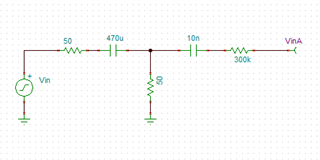We are using a variable gain amplifier from TI (Model No: VCA2617RHBT ) and observing high settling time.
We had made the following observations.
With 440 uF decoupling capacitors gave a settling time of ~15 minutes.
With 220 uF decoupling capacitors gave a settling time of ~10 minutes.
With 4.7 uF decoupling capacitors gave a settling time of ~2 minutes.
With 100 nF decoupling capacitors gave a settling time of ~<1 minutes.
We need to use the 440uF capacitors in the circuit for other reasons.
But settling time of ~ 15 mins is the issue.
Looking forward to support / resolution.






